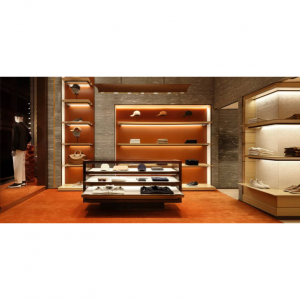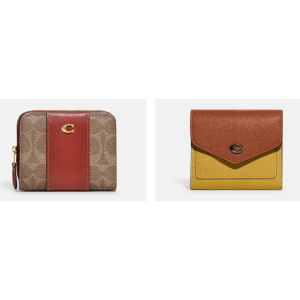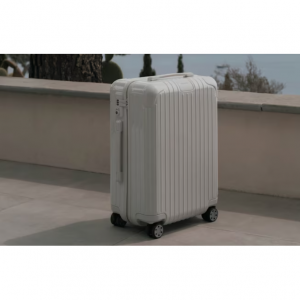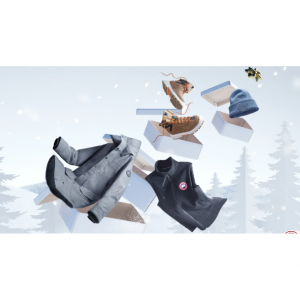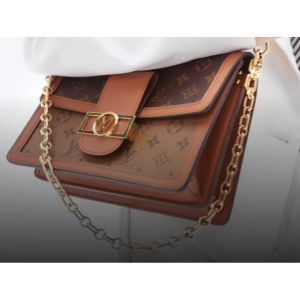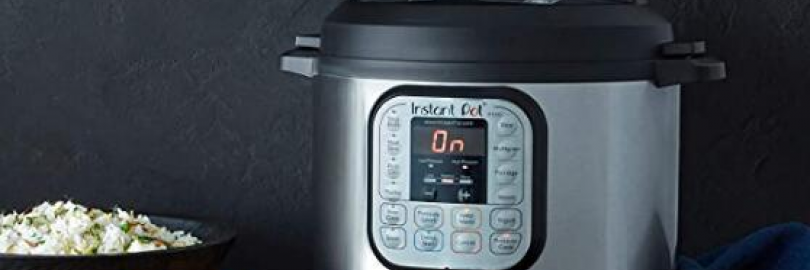
The Ultimate Pressure Cooker Buying Guide 2025
If you spend much time cooking, you’ve probably come across recipes that suggest using a pressure cooker. Over the past few years, Pressure Pots have become a staple in small kitchen appliances. Busy parents use them to get dinner on the table in minutes, while batch cookers use them to simplify midweek meals. Some people prefer them for their ability to cook just about everything from pot roast to yogurt. For super-quick, fuss-free meals, you cannot beat the pressure cooker. Pressure cookers have changed quite a bit in the last few years so there are much more options (such as electric, stainless steel, or stovetop) to consider. So here’s our guide to help you choose the right instant pot for your needs. Our pressure cooker buying guide lays out the basics, brands, prices, from size/capacity (3 quart, 6 quart, or 8 quart) and materials to the bells and whistles. Let's check out.
1. What is a Pressure Cooker?
A pressure cooker is defined as any air-tight vessel, be it an electric appliance or cookware, that utilizes the build-up of steam to quickly cook food. By heating up a small amount of liquid within the closed vessel, you create steam that is unable to escape. A pressure cooker works on a simple principle: steam pressure. This build-up of steam will increase the temperature and pressure within the vessel, and, ultimately, help food cook faster.
2. Types of Pressure Cookers
There are two types of pressure cookers. Stovetop pressure cookers and electric pressure cookers. Regardless of which type you buy, the pressure cooker should be able to endure at least 15 psi (pounds of pressure per square inch).
These types of pressure cookers come with advanced features and use electricity as the source of energy. The electric pressure cookers have become popular with different brands offering top-notch technology. For example, some of the brands with great pressure cookers are Instant pot, Crockpot, T-fal among others.
They use a spring-loaded valve to handle the pressure. They also have microchips that are pre-programmed for different settings creating easy steps to cook meals.
Pros:
1. Extremely easy and safe to use - you essentially have tiny computer co-pilot to help make decisions and monitor the cooking. You will not have to spend as much time monitoring it as you would with a stovetop version.
2. Programmable cooking temperatures allowing you to brown meat and saute vegetables in the pot.
3. High and low settings - nearly all electric pressure cookers allow you to cook at two different pressures, which can be helpful for more fragile things like vegetables or fish.
4. Built in timers - like a slow cooker, many electric pressure cookers will shut off automatically and go to a "warm" setting when cooking is done. This will allow the pressure to begin to release naturally even if you're not right there!
5. Portable - You can really set an electric pressure cooker up anywhere, so it can be useful when you're serving a huge crowd and the stovetop is already full. Most also have a "warm" setting so it can double as a serving vessel.
Cons:
1. Much more expensive replacement parts. In general, I find the lids and cook pots to be much steeper in price.
2. Not as durable - there are more pieces that can fail.
3. Large countertop footprint - most electric pressure cookers are huge, honestly. I had to store mine on top of the fridge because it wouldn't fit in any of my cabinets!
4. Less control over temperature - you're stuck with whatever's programmed into the pressure cooker.
5. Cooking pots are normally non-stick - You may think this is a pro, and sometimes you'd be right. But with extensive use, non-stick cook pots will start to become damaged and take on flavors and smells you don't want carrying over into the next thing you make. If you plan on using your pressure cooker fairly often, you will most likely be replacing the cooking pot pretty soon.
6. Slower to come to pressure, and often cooks at a lower pressure overall. This means slightly longer cook times.

While it might not be as high-tech as an electric pressure cooker, a stovetop pressure cooker is reliable and cost-efficient. This type of cooker goes right on your gas or electric range. It comes in various sizes, from as small as four quarts to as large as eight quarts.
A stovetop pressure cooker usually has at least two settings: low and high pressure. You’ll need to adjust your stove by turning it to maximum heat while the cooker reaches pressure, then lowering it while the cooker maintains that pressure. Most don’t have a built-in timer, so you just need to watch the clock yourself to know when your food is done.
This type of cooker tends to be easier to store, as it can often be stored among your other pots and pans since it’s a similar shape and size. You can also use the base of the pot, without the lid, as a regular cooking pot, giving it dual purpose. So if you have limited space, it might be a better option.
Pros:
1. More durable - most stove top pressure cookers are made of stainless steel with an aluminum or copper core in the base. (if you don't count aluminum versions at least - I'm not because you shouldn't buy one, dangit!)
2. More precise temperature control - because you'll be the one controlling the stove top temperature, you can brown and saute more efficiently and raise and lower the heat as necessary to keep the right amount of pressure.
4. Ability to be used as a standard cooking pot - most stovetop pressure cookers are taller than they are wide, which makes them an excellent pot for boiling pasta, cooking sous vide or simmering soup or stock. Mine has essentially replaced my stock pot for many things.
5. Cheaper replacement parts - in general I've found these replacement parts are much cheaper to buy and also easier to find since there are less pieces to worry about.
Cons:
1. They have a steeper learning curve - you'll need to do a little trial and error with cooking times and stovetop temperatures.
2. More hands on - you'll want to be nearby as it pressurizes and during the cooking process to make sure it doesn't lose pressure.
3. More metal pieces mean more chances of rust - this is not a concern as long as you're good about cleaning and drying the cooker in a timely manner.

Where to Buy Pressure Cookers?
You can go Home Depot, and don't forget to sign up at Extrabux (What is Extrabux?) , then you can get up to 8% super cashback from Extrabux! Sign-Up Bonus: Free to join it & get $20 welcome bonus!
And, Best Buy, Walmart, and Amazon also provide various pressure cookers for you!
3. Factors to Consider When You Decide to Purchase Pressure Cookers
There are a lot of similarities in the pressure cookers you’ll find on the market, but there are a few key differences and features that you should keep an eye out for. To help you find the best pressure cooker for your unique situation, we’ve listed out a few things to keep in mind while shopping.
Size & Capacity
The 6-quart option is well-liked because it is the size most recipes are designed for and can feed families of up to five. If you’re looking to create side dishes, or feed one to two people, the 3-quart mini may be right for you. On the other hand, if you’re cooking for large families or crowds, want to get ahead of meal prep for the week or are looking to cook large cuts of meat, you might want to consider the 8- or 10-quart options.
Conclusions:
1. 3 Quartis great for cooking rice, side dishes, or meals up to 3 people.
2. 6 Quartis the perfect size for feeding up to 6 people.
3. 8 Quart is perfect large families or whipping up big batches of prepared meals for the week.
4. 10 Quart is Instant Pot’s largest pressure cooker yet, ideal for preparing larger meals to feed a crowd or to stock the freezer with family dinners.

PSI (Pounds Per Square Inch)
PSI (pounds per square inch) is the measurement of how much pressure your pressure cooker can cook with. The unofficial standard for pressure cooking is 15 PSI – this is what most of the recipes you find will use.
Ideally, you want to find a pressure cooker that gets up to 15 PSI (you won’t find any that go above that). Most stovetop pressure cookers will reach that level, however many electric pressure cookers will only get up to 10 or 12 PSI. With these, you still get all the benefits of a pressure cooker, in comparison to other types of cooking, but don’t get as much of them as you do with 15 PSI.
Cost
Electric pressure cookers typically range from 3 to 10 quarts in size. They can cost anywhere from $60 to over $200, but most models fall into the $100 to $150 range.
Prices for stovetop pressure cookers vary widely. You can pay as little as $20 for a small, basic model, or upwards of $300 for a larger, high-end model with top-quality construction. Experts say you can get a sturdy, 8-quart cooker with two pressure settings for $100 or less.
Material
The two primary materials that pressure cookers come in include: stainless steel and aluminum.
Stainless steel pressure cookers will be more expensive and heavier, but are known for durability. Aluminum models are lightweight and have a lower price point, but the weaker material gives them a shorter lifespan. Although stainless steel is widely regarded as the superior model, aluminum does cook more evenly. Many stainless steel models come with a layered base to help make up the difference, so if you go with stainless steel be on the lookout for a model that includes this feature.
You may also occasionally come across a pressure cooker with a non-stick interior. You do have to be more cautious with this material, though, because it could chip or scratch if not cared for properly.
Options Beyond Pressure Cooking
Of course, these electric pressure cookers come with lots of other settings—in fact, many are known as multi-cookers. Consider all the different settings before you order. Some models offer functionality designed to expand upon the Instant Pot “set and forget” experience, such as Smart Programs designed to perfectly cook various meats and poultry, porridge and oatmeal, grains, beans, lentils and chilis, soups, stews, cakes, eggs, and homemade yogurt. It’s likely that you might not need a multi-cooker with 10 different cook options, so opt for a more basic model to save a few pennies.
Safety
Years ago, stovetop pressure cookers got a bad reputation for their lids being relatively easy to remove before the pressure released, which runs the risk of burns and messes.
To avoid those issues, modern electric models are equipped with built-in safety features that prevent you from releasing the lid while the pressure is still high.
Any pressure cooker you buy should have a lid that fits secure and tight, as well as strong handles that are easy to grip, so you don’t risk dropping it. Your pressure cooker should also have precision valve pressure regulators that make sure enough steam gets released and regulates the internal pressure while you’re cooking. You also want to look for a pressure cooker with a locking feature for the lid – if you remove the lid from a pressure cooker while it’s cooking you’re likely to end up with some burns from the splattered food and steam.
However, it’s still important to handle your pressure cooker with care. Always follow the manufacturer’s instructions for filling, cleaning, and maintaining it to the letter. Here are a few tips to keep in mind:
1. Don’t Overfill. If the cooker is overfilled, the pressure relief valves can become blocked. The instruction manual for your pressure cooker should say how much it’s safe to fill it.
2. Keep It Clean. After using your pressure cooker, make sure to clean the gasket and pressure valves thoroughly. If anything blocks them, the cooker won’t work properly. Examine these parts to make sure they’re clean and unclogged before you use the cooker again.
3. Make Sure the Lid is Locked. It shouldn’t be possible to use your pressure cooker if the lid isn’t locked in place. However, you should still check each time to make sure it’s properly sealed. If the lid manages to come loose, it could go flying off when the pressure builds up.
4. Never Force the Lid. You shouldn’t be able to remove the lid until the pressure has gone down. But if you force the lid, it could come off while the contents are still under pressure, sending a stream of hot food into your face. Don’t open the lid unless it turns easily.
5. Replace Parts as Needed. Pressure cooker valves and gaskets wear out over time and need to be replaced. Your manual should have instructions about how often to replace yours. However, if you see that either part looks cracked, worn, soft, or sticky, you should replace it right away. You should also replace the ring if you ever see steam leaking out around the edges while you’re using the cooker.
Extra Features to Consider:
Those are the most important considerations, but here are a few extras that are worth keeping an eye out for:
Cooking Rack:
Most pressure cookers come with a cooking rack. These are useful for steaming vegetables or any other types of food that you want to keep above the water line. These will allow you to cook multiple types of food, within the same unit. You may be able to find a cooking rack as a separate add-on.
Recipe Book:
While a book of pressure cooker recipes are not a necessity in the days of the web, some devices will have a recipe book packaged with them. It can be a nice value-add for coming up with ideas for ways to use your pressure cooker. With that said, here are the top-rated pressure cooker cookbooks on Amazon.
Different Sized Cooking Pots:
You’ll likely find yourself wanting to cook different quantities at different times and having the appropriate size of pot can come in handy.
Pressure Canning:
Some larger models can be used for pressure canning as well, but you shouldn’t try pressure canning with any pressure cooker unless the manual specifies that it’s safe to use it for such.
Warranty:
A warranty is always a good sign that a company stands behind their product and you can count on it to last. Likely, you won’t ever have to use it, but it’s nice to have, nonetheless.
4. Popular Brands of Pressure Cookers
Once you have a pretty clear idea of what you most want in a pressure cooker, you need to consider the best brand to go with. Since stovetop pressure cookers can be counted on to last for so long, you don’t want to end up with a brand that doesn’t last as long as your pressure cooker itself does or you might end up having to buy a whole new pressure cooker in a few years when all you need is one small part.
Let's checked out the most popular brands on the market!
T-Fal is a well-known French manufacturer of cookware, kitchen appliances, pressure cookers, and accessories. The company was founded in 1954 by Marc Grégoire. Most of their products are positively evaluated for having safe features and durability. One of the good things about T-Fal that I like is that T-Fal always spends much of their time to study and understand customer needs.
T-Fal pressure cookers are not only innovative but also work efficiently. They are designed with strong, durable, and safe materials. I have one myself, and now I no longer have any doubts about T-Fal pressure cookers, as they are “Easy to use, time-saving, and convenient,” as they describe them. If you buy one pressure cooker from T-Fal, you will definitely be use it for many more years to come.

Presto is well known for pressure cookers that fall on the lower end of the price range. They offer both aluminum and stainless steel models and mostly sell stovetop pressure cookers, but do have electric models as well. While they don’t have the strong reputation of some of the other brands on the market, for beginners who aren’t prepared to spend much on their pressure cookers, many customers seem satisfied with their Prestos.

Instant Pot is the Canadian manufacturer of kitchen appliances such as electronically controlled and combined pressure cookers and slow cookers. The company was founded in 2009 by a team of technology veterans. Their pressure cooker product line has received lots of positive reviews from consumers on the market.
They are known for creating user-friendly pressure cooker designs, and they also do a good job of slow cookers for busy people who do not have much time. Now, some of Instant Pot’s best-selling models are the Duo Series, Lux Series, and Duo Plus Series. They also have a multi-use 6-in-1 appliance and a multi-user 7-in-1 appliance evaluated highly by consumers.

Prestige is a big brand in the pressure cooking industry and is known for delivering good quality products for delicious cooking results. Their products are simple, easy to use, and durable. Their main specialty is the small-sized models that would comfortably fit in any kitchen. These models vary in prices as dictated by their functionalities. Their primary focus is durability and high quality and this focus is maintained on every new model that is brought into the market. In order to choose the right Prestige model, you will have to consider the various capacities offered as well as their features.

The Hawkins Cookers Limited has been in the cookware industry since 1959 and is among the best Indian companies. The company has a global impact with over 72 million cookwares sales recorded across the globe. One reason you need to invest in their pressure cooker is that there is a high priority on safety. It comes with a great design, inside fitting lid, and safer styling. They have a reputation for prioritizing quality over quantity. You are therefore guaranteed of getting the finest quality, reasonably priced, and well-constructed unit. The main focus in choosing these units is to balance between efficiency, affordability, and portability.

The Fagor brand is known for its inattentiveness, construction uniqueness, energy efficiency, and great design. This brand also has a long operation history (since 1954). Fagor is one of the largest appliance manufacturers in Europe. The brand focuses on producing major appliances, small appliances, and cookware with the highest quality. Fagor pressure cookers are user-friendly and easy to clean, with good designs and high duration. Furthermore, most Fagor product lines are eco-friendly. Therefore, their pressure cookers are often on the top good pressure cookers lists across the world.

These units are manufactured by a reputable cookware brand known as Wisconsin Aluminum Foundry. The company has been around for close to 90 years. It is known for its commitment to offer high-quality and durable cookware products. These products are known to save money and time during cooking. They feature a distinctive metal-to-metal construction which gives it long lasting qualities. These units are generally easier to use, maintain, and efficient. You also get superb heat absorption qualities with these units. You will have to consider the different sizes and shapes that suit your needs.

Cuisinart is a well-known brand when it comes to kitchen appliances. Perhaps better known for their coffee makers and countertop toaster ovens, Cuisinart has certainly carved their name into homes and kitchens all around the world. With a reputation for well-made and affordable appliances, Cuisinart’s line of pressure cookers are no different. Finding critical reviews is going to take some work. While hunting for the best pressure cooker, Cuisinart is one brand you should definitely be at the top of your list.

5. Benefits of Pressure Cooking
Food Cooks Faster
This is the most popular reason why people buy pressure cookers, and it’s an excellent one. Your meals require only 30% of the time that traditional cooking methods need to finish. Not only does this save you time and effort, but it also saves you money, because you need less energy to cook. Furthermore, your kitchen stays cooler, lowering your air conditioning costs in the summer and keeping it more pleasant year round.
Food Retains More Nutrients
In traditional cooking, many of the food’s nutrients are lost in the cooking process through water evaporation. Pressure cookers require a minimal amount of water to cook the foods so fewer nutrients are lost. Your food retains the fresh taste and healthy nutrients, ensuring that much-needed vitamins and minerals remain a part of your diet.
Safer Cooking
The very high temperatures used in pressure cooking mean that the chances are higher that any germs or bacteria are destroyed during cooking. In addition, the safety features in today’s pressure cookers have greatly improved with more safety valves and venting, reducing the types of problems associated with the older style pressure cookers.
Flexible Cooking Method
Pressure cooking works with a wide variety of recipes and cooking styles, making it perfect for any taste. Breakfasts, roasts, canned fruits and vegetables, taco meat, stews – all of these dishes and more are improved with the use of a cooker.
Easy to Use, Easy to Clean
Today’s cookers are easy to use; they add pressure to the food, and take it off of the cook! You don’t need to worry about scorching, boiling over, splattering, or sticking foods anymore. Not only does this ensure that your meals taste great, but it also makes cleanup a snap!
6. Conclusion
No matter which size, brand, or model you decide to buy, you can count on a pressure cooker delivering faster meals that keeps more nutrients packed in. You’ll enjoy the main benefits regardless, so to settle on the right pressure cooker, you just need to figure out what other factors you value most.

Extrabux is an international cashback shopping site, offering up to 30% cashback from 10,000+ Stores!
B&H Photo Video, Dyson, Woodland Direct, Ooni UK, Bed Bath and Beyond, TUSHY, Zoro, Anthropologie, 4seating.com, GDF Studio, simplehuman, Appliance Parts Pros, etc.
Join to get $20 welcome bonus now! (How does Welcome Bonus work?)
Recommendation
-

Is Turkish Airlines Good for International Flights?
-

10 Best & Stylish Winter Coats for Women on NET-A-PORTER in 2025
-

Top & Best 12 Sneaker Apps/Websites for Raffles, Releases & Restocks in 2025
-

7 Best Gift Card Exchange Sites - Buy, Sell and Trade Discount Gift Card Safely and Instanly!
-

Top 9 Professional Skincare Brands for Licensed Estheticians 2025

